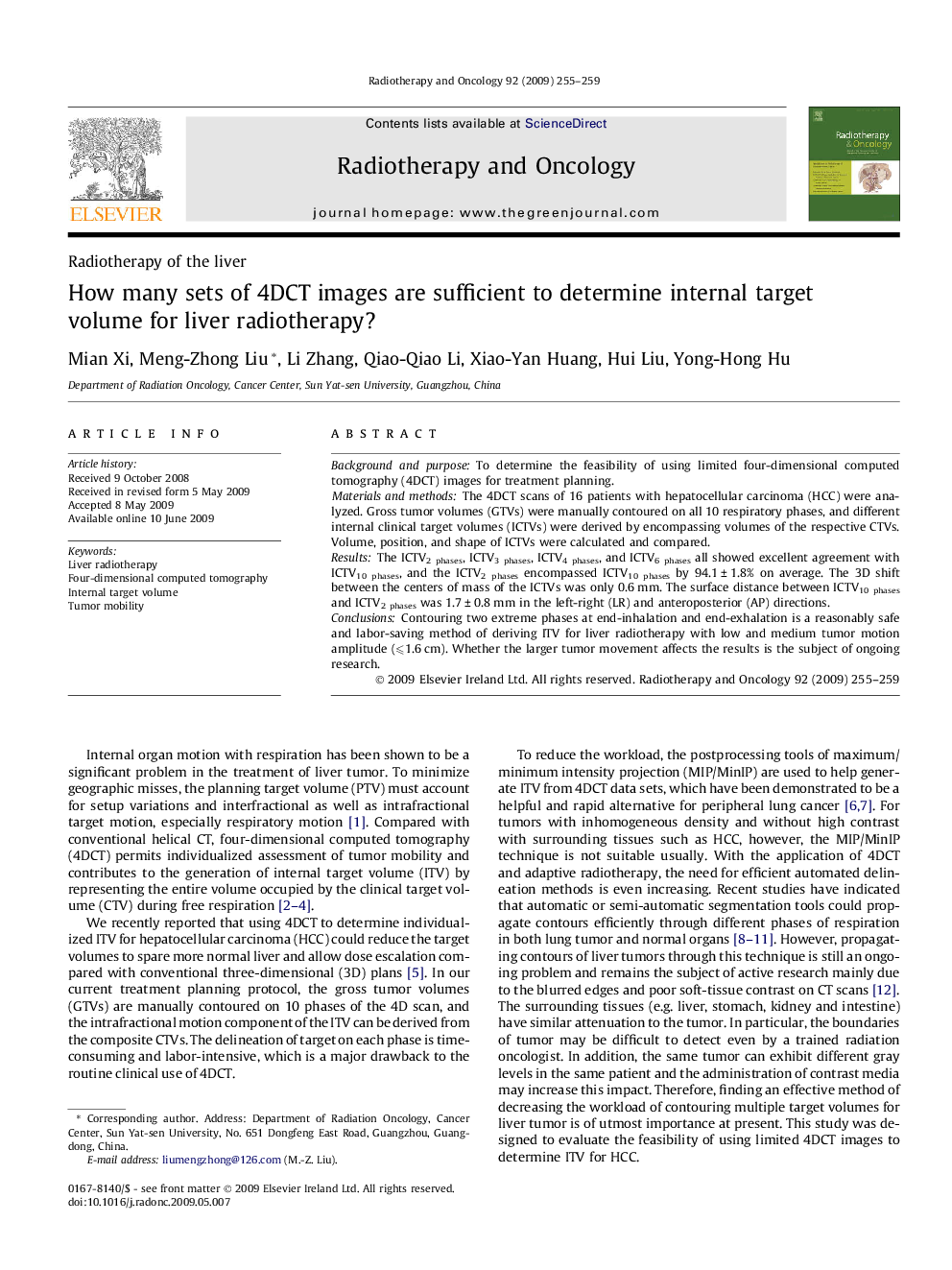| Article ID | Journal | Published Year | Pages | File Type |
|---|---|---|---|---|
| 2159865 | Radiotherapy and Oncology | 2009 | 5 Pages |
Background and purposeTo determine the feasibility of using limited four-dimensional computed tomography (4DCT) images for treatment planning.Materials and methodsThe 4DCT scans of 16 patients with hepatocellular carcinoma (HCC) were analyzed. Gross tumor volumes (GTVs) were manually contoured on all 10 respiratory phases, and different internal clinical target volumes (ICTVs) were derived by encompassing volumes of the respective CTVs. Volume, position, and shape of ICTVs were calculated and compared.ResultsThe ICTV2 phases, ICTV3 phases, ICTV4 phases, and ICTV6 phases all showed excellent agreement with ICTV10 phases, and the ICTV2 phases encompassed ICTV10 phases by 94.1 ± 1.8% on average. The 3D shift between the centers of mass of the ICTVs was only 0.6 mm. The surface distance between ICTV10 phases and ICTV2 phases was 1.7 ± 0.8 mm in the left-right (LR) and anteroposterior (AP) directions.ConclusionsContouring two extreme phases at end-inhalation and end-exhalation is a reasonably safe and labor-saving method of deriving ITV for liver radiotherapy with low and medium tumor motion amplitude (⩽1.6 cm). Whether the larger tumor movement affects the results is the subject of ongoing research.
